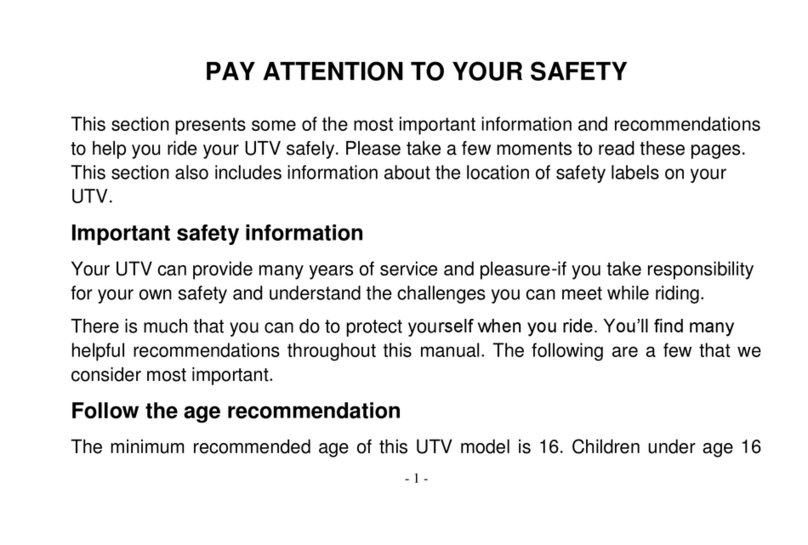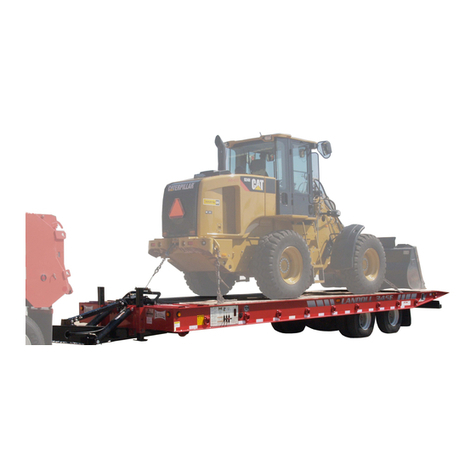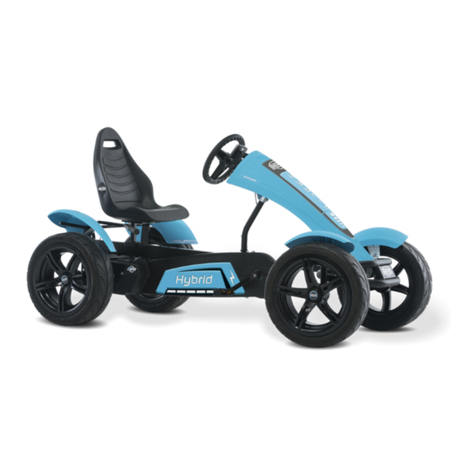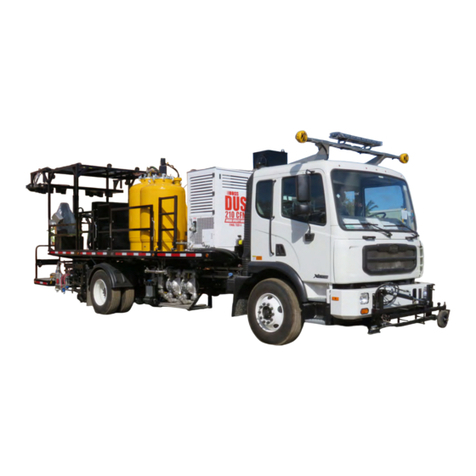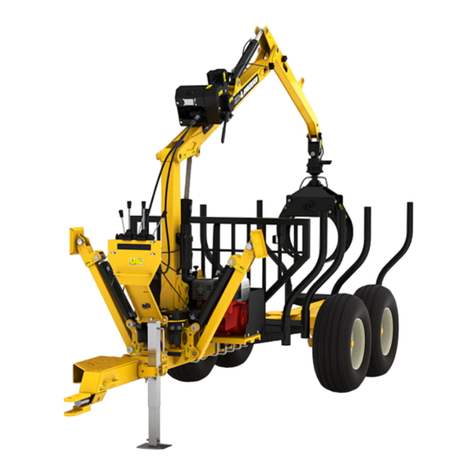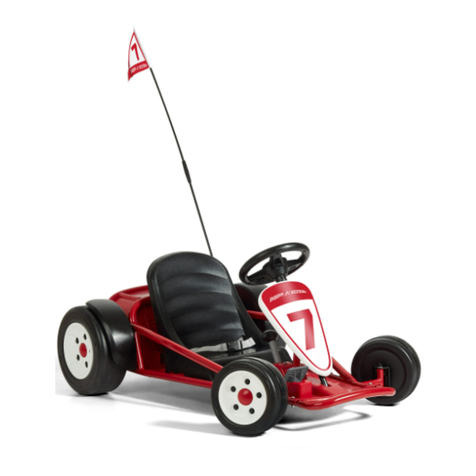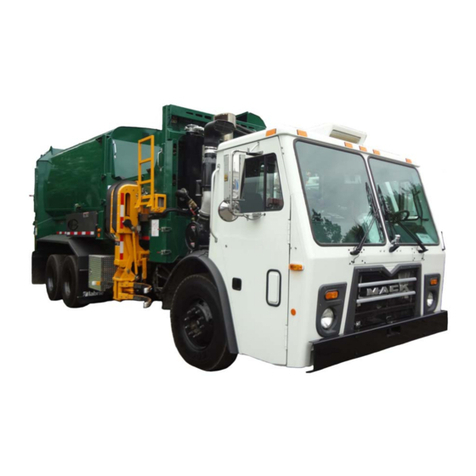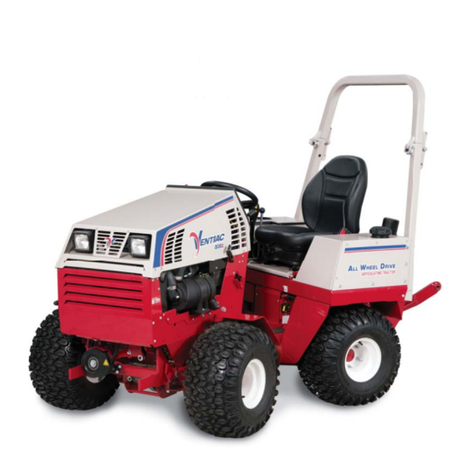BMS Sniper T-1500 2S User manual

Owner’s Manual
%0661,3(576
READ THIS MANUAL CAREFULLY.
IT CONTAINS IMPORTANT
SAFETY INFORMATION.

1
MINIMUM RECOMMENDED OPERATOR AGE:
FOR OFF-ROAD USE ONLY
This vehicle is designed and manufactured for off-road use only.
USA only:
It does not confirm to federal motor vehicle safety standards, and
operation on Public streets, roads, or highways is illegal.

2
%0661,3(57Limited Warranty
The warranty policy applies to those cases where the new seller vehicle is
unloaded from its shipping container, set up and delivered by authorized dealer,
and under normal use and service is found to have defects in parts or
workmanship under the following terms and conditions. This warranty covers
the engine and engine related components for a period of 90 days.
This warranty does not apply to any part, which in opinion of seller was
defective because of improper maintenance, improper assembly, alterations,
abuse, negligence or accident.
Should warranty service be required on your BMS Sniper T 1000
during the 90 days warranty period, please contact the nearest
authorized dealer for repairs.

3
What is not covered under this warranty?
This warranty does not cover any seller vehicle that has been subjected to:
a. This warranty does not cover any seller vehicle in any way so to adversely
affect its safety or reliability.
b. Renting.
c. Disassembly, adjusting, or repairing of the vehicle in any way so as to
adversely affect its safety or reliability.
d. Competition or racing.
The warranty does not cover loss of use of the seller vehicle, loss of time,
inconvenience, or other consequential damage which includes, but is not limited
to, loss or damage to persons or property or any expense of returning any
damaged units to the seller distributor or its authorized dealer. Seller has the
right to make changes without notice.

4
CONTENTS
OWNER’S MANUAL
1. FOREWORD··························································································5
2.A FEW WORDS ABOUT SAFETY································································6
3.IMPORTANT SAFETY INFORMATION·························································7
4.SAFETY LABELS··················································································14
5.ARE YOU READY TO DRIVE?··································································17
6.IS YOUR VEHICLE READY TO DRIVE?······················································22
7.SAFE DRIVING PRECAUTIONS································································25
8.SPECIFICATIONS···················································································29
9.CONTROL FUNCTIONS··········································································32
10. MAINTENANCE···················································································47
11. ENGINE······························································································53

5
OWNER’S MANUAL
1. FOREWORD
Thank you for choosing our BMS Sniper T 1000 Go-kart
We hope you will have fun with it. Before you drive the BMS Sniper T 1000 Go-kart.
Please read through this Owner’s Manual carefully as it contains important safety
and maintenance information. Failure to follow the warnings contained in this manual can
result in serious injuries.
Besure to follow the recommended maintenance schedule and service your kart accordingly.
Preventive maintenance is extremely important to the longevity of your BMS Sniper T 1000.
We hope you will have a pleasant experience with our products and thanks again for choosing
us.

6
2. A FEW WORDS ABOUT SAFETY
In order to keep everyone safe you must take responsibility for the safe operation of you
Go-Kart. To help you make informed decisions about safety, we have provided operating
procedures and other information on labels and in this manual. This information alerts you to
potential hazards that could hurt you or others.
It is not practical or possible to warn you about all hazards associated with operating or
maintaining a Go-kart. You must use your own good judgment.
You will find important safety information in a variety of forms, including:
Safety Labels -C On the Go-Kart.
Safety Messages-C Preceded by a safety alert symbol and one of two signals.
WARNING, or CAUTION.
These signal words mean:
Physical harm may result from failure to adhere to the instructions that are described within
the WARNING labels.
Safety Headings---It means important safety precautions.
Safety Section---It means Go-Kart safety.

7
Instructions---how to use this Go-Kart correctly and safely.
This entire manual is filled with important safety information----please read it carefully.
3. IMPORTANT SAFETY INFORMATION
Your Go-Kart will provide you with many yeas of service and pleasure. Proving you take
responsibility for your own safety and understand the challenges you can meet while driving.
There is much that you can do to protect your self when you drive. You’ll find many helpful
recommendations throughout this manual. The following are a few that we consider most
important.
Follow the Age Recommendation
It is strongly recommended that no one under the age of 16 be permitted to drive this Go-Kart
without adult supervision.
Always Wear a Helmet
It’s a proven fact: helmets significantly reduce the number and severity of head injuries.
Always wear an approved motorcycle helmet. We also recommend that you wear eve
protection, sturdy boots, gloves, and other protective gear.
Drive Off-Road Only

8
Your Go-Kart is designed and manufactured for off-road use only. The tires aren’t made for
pavement, and the Go-Kart does not have some features requires required for use on public
roads. lf you need to cross a paved or public road, get off and walk your Go-Kart across.
Take Time to Learn & Practice
Even if you have derived other Go-Kart, take time to become familiar with how this Go-Kart
works and handles. Practice in a safe area until you build your skills and get accustomed to
this Go-Kaart`s size and weight.
Because many accidents involve inexperienced or untrained drives, we urge all drives to take
a training course approved by the Go-Kart Safety Institute. Check with your dealer for more
information on training courses.
Be Alert for Off-Road Hazards
The terrain can present a variety of challenges when you drive off-road. Continually “ read”
The terrain for unexpected turns, drop-offs, rocks, ruts, and other hazards. Always keep your
speed low enough to allow time to see and react to hazards.
Drive within Your Limits
Pushing limits is another major cause of Go-Kart accidents. Never drive beyond your personal
abilities or faster than conditions warrant. Remember that alcohol, drugs, fatigue, and

9
inattention can significantly reduce your ability to make good judgments and driver safely.
Don `t Drink and drive
Alcohol and driving don` t mix. Even one drink can reduce your ability to respond to
changing conditions, and your reaction time get s worse with every additional drink. So don` t
drink and drive, and don` t let your friends drink and drive either.
Never run your Go-Kart indoors
The exhaust from the engine contains a tasteless, odorless and poisonous gas called carbon
monoxide.
Keep away from moving parts of the Go-Kart
The operator of the Go-Kart should never place their hands or other parts of their body near
any moving part of the Go-Kart. Failure to adhere to this warning will cause physical harm to
your body.
Skidding or Sliding
The terrain surface can be a major factor affecting turns, Skidding a turn is more like to occur
on slippery surfaces such as snow, ice, mud and loose gravel. Lf you skid on ice, you may lose
all directional control. To avoid skidding on slippery terrain, keep you speed low and drive
carefully.

10
·Read this manual and all labels carefully and follow the operating procedures described.
·This vehicle is designed to carry the driver and one passenger. Never carry passengers in the
cargo bed.
·Always be sure the driver and passenger are wearing seat belts.
·Never give a ride to a passenger who is too small to reach and hold the handgrip on the
enclosure.
·Always avoid operating the vehicle on any pave d surfaces, including sidewalks, driveways,
parking lots, and streets.
·Never operate this vehicle on any public street, road, or highway, even a dirt or gravel one.
·Never operate this vehicle without wearing an approved motorcycle helmet that fits properly.
You should also wear eye protection (goggles or a face shied), gloves, over-the-ankle boots,
long-sleeved shirt or jacket, and long pants.
·Never consume alcohol or drugs before or while operating this vehicle.
·Never operate at speeds too fast for your skills or the conditions. Always go at a speed that is
proper for the terrain, visibility, operating conditions, and your experience.
·Never attempt jumps or other stunts.
·Always inspect your vehicle each time you use it to be sure it is in safe operating condition.

11
Always follow the inspection and maintenance procedures and schedules described in this
manual.
·Always keep both hands, arms, feet, and legs in side the vehicle at all times during operation.
Keep your feet on the floorboard. Never hold onto the enclosure except when using the
handgrip inside the enclosure. Otherwise, your hand could be injured if it is caught between
the enclosure and an obstacle outside the vehicle.
·Always keep both hands on the steering wheel when driving.
·Never wrap your thumbs and fingers around the steering wheel. This is particularly important
when driving in rough terrain. The front wheels will move right and left as they respond to the
terrain, and this movement will be felt in the steering wheel. A sudden jolt could wrench the
steering wheel around, and your thumbs or fingers could be injured if they are in the way of
the steering wheel spokes.
·Always go slowly and be extra careful when operating on unfamiliar terrain. Always be alert
to changing terrain conditions when driving the vehicle.
·Never operate on excessively rough, slippery, or loose terrain until you have learned and
practiced he skills necessary to control the vehicle on such terrain . Always be especially
cautious on these kinds of terrain.

12
·Never turn at excessive speed. Practice turning at slow speeds before attempting to turn at
faster speeds. Do not attempt turns on steep inclines.
·Never operate the vehicle on hills that are too steep for it or for your abilities. Go straight up
and down hills where possible. Maximum slope angle:15°.
Never operate on hills that are slippery or ones where you will not be able to see far enough
ahead of you . Never go over the top of a hill at sped if you cannot see what is on the other
side.
·Always follow proper procedures for going uphill. If you lose momentum and cannot
continue up a hill, back down the hill with the engine in reverse gear. Use engine braking to
help you go slowly. If necessary, use the brakes gradually to help you go slowly.
·Always check terrain carefully before going down hills. Go as slowly as possible. Never go
down a hill at high speed.
·Always check for obstacles before operating in a new area.
·Never operate the vehicle in fast flowing water or water deeper than the floorboards on this
model . Remember that wet brakes may have reduced stopping ability. Test your brakes after
leaving water. If necessary, apply them several times to let friction dry out the linings.
·Always be sure there are no obstacles or people behind you when you operate in reverse.

13
When it is safe to proceed in reverse, go slowly. Do not brake abruptly when carrying loads in
the cargo bed.
·Always use the size and type of tires specified in this manual.
·Always maintain proper tire pressure as described in this manual.
·Never exceed the stated load capacity. Cargo should be as far forward in the bed as possible,
and distributed evenly from side to side. Be sure cargo is secured so that it cannot move
around during operation. Reduce speed and follow instructions in this manual for carrying
cargo or pulling a trailer. Allow greater distance for braking.

14
4. SAFETY LABELS
This section presents some of the most important information and recommendations to help
you drive your Go-Kart safely. Spend a few moments to read these pages.
The labels are considered permanent parts of the Go-Kart. If a label comes off or becomes
hard to read, contact your dealer for warning labels replacements.
Read and understand all of the labels on you vehicle. They contain important information for
safe and proper operation of your vehicle.
Never remove any labels from your vehicle. If a label becomes difficult to read or comes off,
a replacement label is available from your dealer.

15

16

17
5. ARE YOU READY TO DRIVE?
Before each drive, you need to make sure you and your Go-Kart are both ready to drive. To
help get you prepared, this section discusses how to evaluate your driving readies what
items you should check on your Go-Kart, and adjustments to make for your comfort,
convenience, or safety.
Before you drive your Go-Kart for the first time, we urge you to:
·Read this owner` s manual and the labels on your Go-Kart carefully.
·Make sure you understand all the safety messages.
·Know how to operate all the controls.
·Have adult present if under 16 years old.
Before each drive, be sure:
·You feel well and are in good physical and mental condition.
·You are wearing an approved motorcycle helmet (with chin strap tightened secure) eye
protection, and other protective clothing.
·You don’ t have any alcohol or drugs in your system.
Protective Apparel
·For your safety, we strongly recommend that you always wear an approved motorcycle

18
helmet, eye protection, boots, gloves, long pants, and long-sleeved shirt or jacket whenever
you drive. Although complete protection is not possible, wearing proper wear can reduce the
chance of injury when you drive.
The following suggestions will help you choose the proper driving wear.
·Helmets and Eyes Protection
Your helmet is your most important piece of driving gear because it offers the best protection
against head injuries. A helmet should fit your head comfortably and securely.
·An open-face helmet offers some protection, but a full-face helmet offers more. Regardless
of the style, look for a DOT (Department of Transportation) sticker in any helmet you buy.
Always wear a face shield or goggles to protect your eyes and help your vision.
·Additional Driving Wear
In addition to a helmet and eye protection, we also recommend:

19
1. Sturdy off-road motorcycle boots to help protect your feet, ankles, and lower Off-road
motorcycle gloves to help protect your hands.
2. Driving pants with knee and hip pads, a driving jersey with padded elbows, and a
chest/shoulder protector.
Drive Training
Developing your driving skills is an on-going process. Even if you have derived other
Go-Karts, take time to become familiar with how this Go-Kart works and handles. To build
skills, Practice driving the Go-Kart in a safe area, do not drive in rough terrain until you get
accustomed to the Go-Kart’s controls, and feel comfortable with its size and weight.
Table of contents
Other BMS Utility Vehicle manuals
Popular Utility Vehicle manuals by other brands
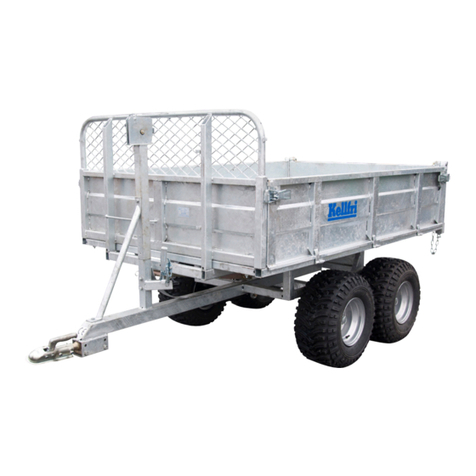
Kellfri
Kellfri 23-TV15ATV manual

Clam Corp
Clam Corp Polar HD 1200 Specification sheet
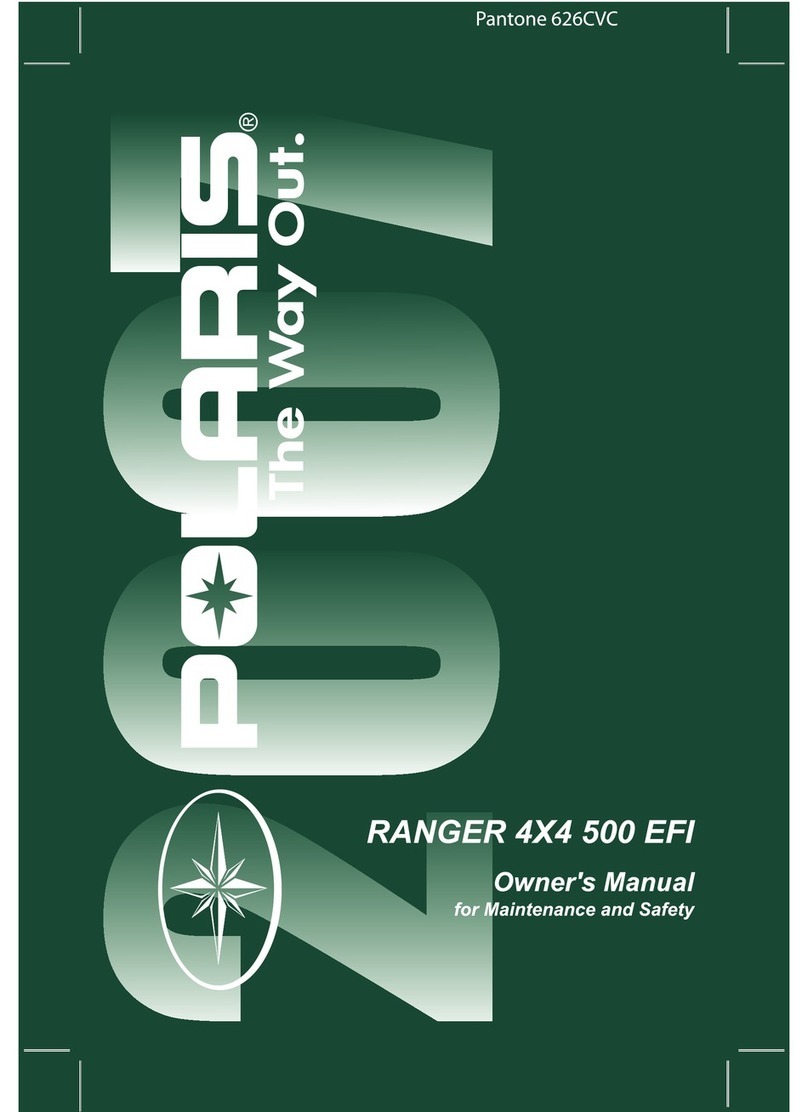
Polaris
Polaris Ranger 4x4 500 EFI 2007 owner's manual

Atlanta
Atlanta 701D Technical manual
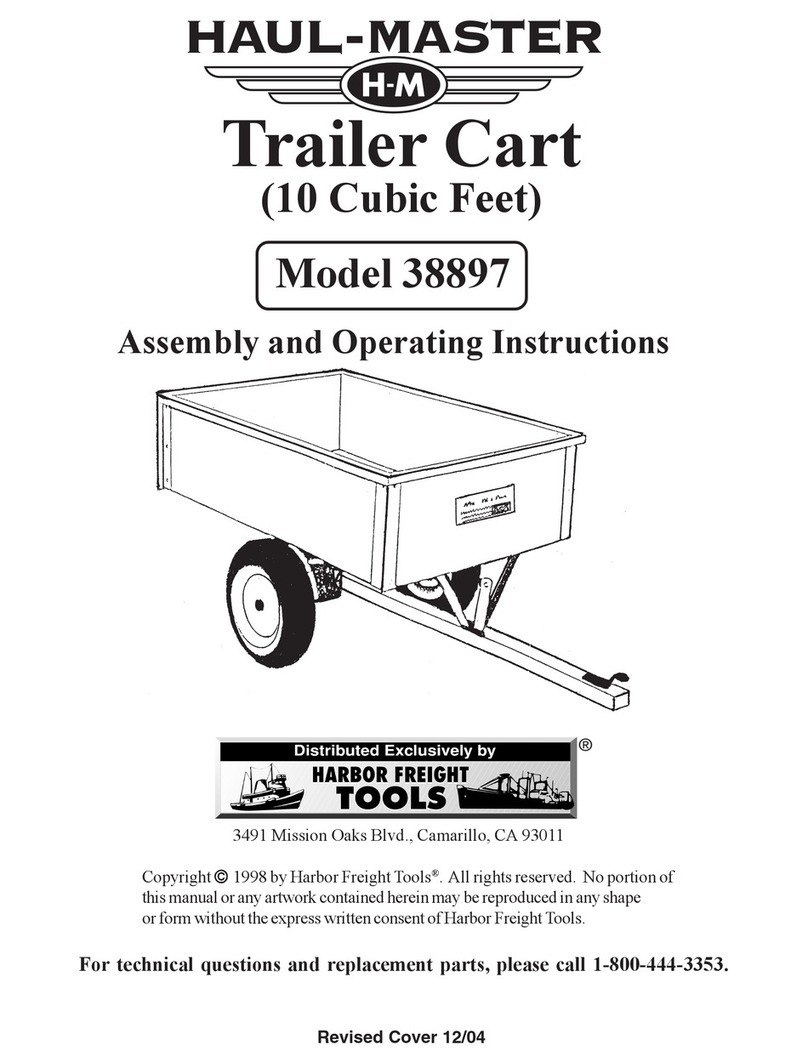
HAUL MASTER
HAUL MASTER 38897 Assembly and operating instructions
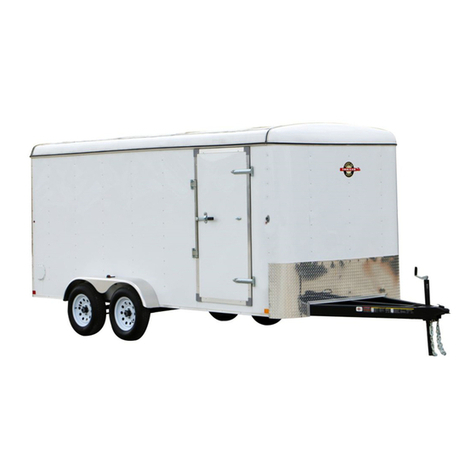
Carry-On Trailer Corporation
Carry-On Trailer Corporation 7x16CG User's manual - safety guide
